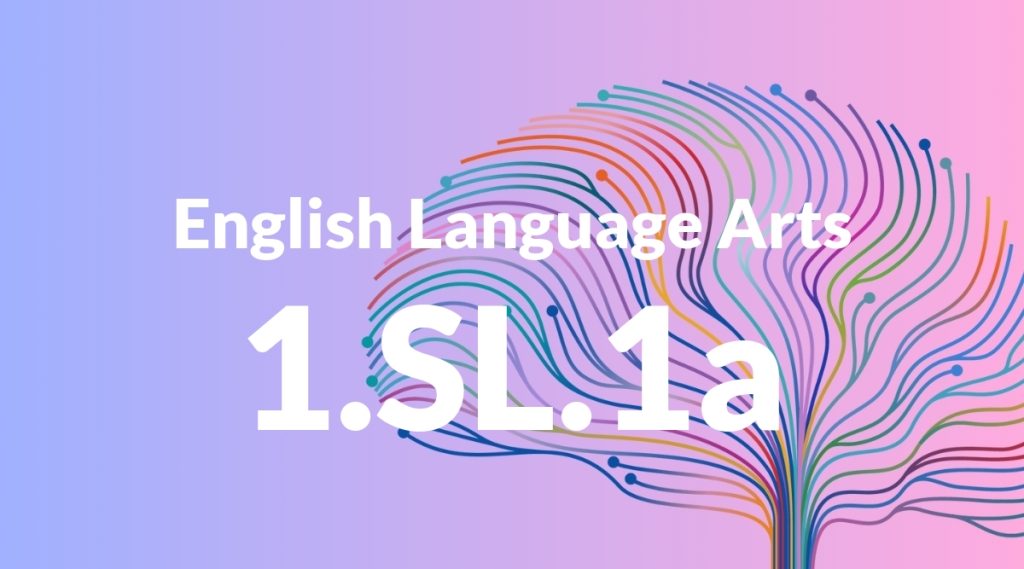Standard: 1.SL.1a – Follow agreed-upon rules for discussions (e.g., listening to others with care, speaking one at a time about the topics and texts under discussion).
Grade level: Grade 1
Subject: English Language Arts
Domain: Speaking & Listening
Teacher Overview
This standard emphasizes the importance of following agreed-upon rules for discussions, such as listening attentively and speaking one at a time. Mastering these skills is crucial for effective communication and collaboration, which are essential in both academic settings and everyday life. Students should have a basic understanding of conversational turn-taking and the importance of listening to others before speaking.
After mastering this standard, students will be able to engage in more complex discussions, build on others’ ideas, and ask clarifying questions, enhancing their overall communication skills.
Common Misconception 1
Some students may believe they can speak out of turn during discussions, disrupting the flow of conversation. This misconception arises from a lack of understanding of structured discussion rules.
Intervention 1
Use visual aids like a talking stick or a ‘speaker hat’ to reinforce the concept of taking turns. Role-playing scenarios can also help students practice waiting for their turn.
Common Misconception 2
Another common misconception is that listening means simply being quiet, rather than actively engaging with the speaker’s words. This can lead to superficial understanding and missed information.
Intervention 2
Implement active listening exercises where students must repeat or summarize what the previous speaker said before contributing their own ideas. This reinforces the importance of truly listening.
Prerequisite Knowledge
Students should understand basic conversational skills such as taking turns speaking, listening quietly when others are talking, and raising their hand to speak.
Subsequent Knowledge
Students will develop more advanced communication skills, including the ability to build on others’ ideas, ask clarifying questions, and engage in more structured and complex discussions.
Instructional Activities
- Role-playing different discussion scenarios
- Using a talking stick or other visual cue during group discussions
- Listening and summarizing exercises
- Classroom discussions on familiar topics
- Small group projects requiring collaboration




